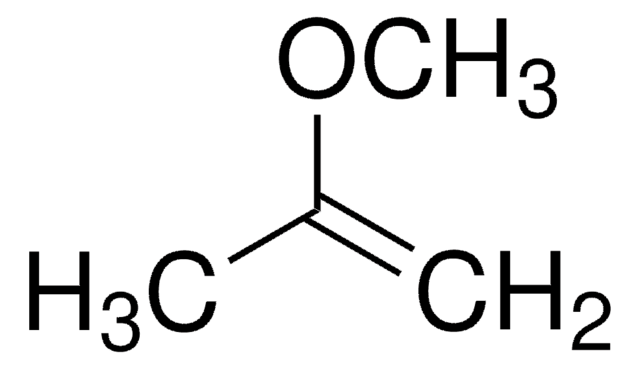B85919
(±)-2-Butanol
ReagentPlus®, ≥99%
Sinónimos:
sec-Butyl alcohol
About This Item
Productos recomendados
densidad de vapor
2.6 (vs air)
Nivel de calidad
presión de vapor
12.5 mmHg ( 20 °C)
Línea del producto
ReagentPlus®
Ensayo
≥99%
Formulario
liquid
temp. de autoignición
761 °F
lim. expl.
9.8 %
DIV
for in vitro diagnostic use
índice de refracción
n20/D 1.397 (lit.)
bp
98 °C (lit.)
mp
−115 °C (lit.)
densidad
0.808 g/mL at 25 °C (lit.)
cadena SMILES
CCC(C)O
InChI
1S/C4H10O/c1-3-4(2)5/h4-5H,3H2,1-2H3
Clave InChI
BTANRVKWQNVYAZ-UHFFFAOYSA-N
¿Está buscando productos similares? Visita Guía de comparación de productos
Descripción general
Aplicación
- As a precursor to produce 2-butanone in presence of KMnO4 oxidant and CPC (N-cetylpyridinium chloride) micellar catalyst.
- In the production of CH3NH3PbI3 perovskite films.
Información legal
Palabra de señalización
Warning
Frases de peligro
Consejos de prudencia
Clasificaciones de peligro
Eye Irrit. 2 - Flam. Liq. 3 - STOT SE 3
Órganos de actuación
Central nervous system, Respiratory system
Código de clase de almacenamiento
3 - Flammable liquids
Clase de riesgo para el agua (WGK)
WGK 1
Punto de inflamabilidad (°F)
80.6 °F - closed cup
Punto de inflamabilidad (°C)
27 °C - closed cup
Elija entre una de las versiones más recientes:
¿Ya tiene este producto?
Encuentre la documentación para los productos que ha comprado recientemente en la Biblioteca de documentos.
Los clientes también vieron
Nuestro equipo de científicos tiene experiencia en todas las áreas de investigación: Ciencias de la vida, Ciencia de los materiales, Síntesis química, Cromatografía, Analítica y muchas otras.
Póngase en contacto con el Servicio técnico








